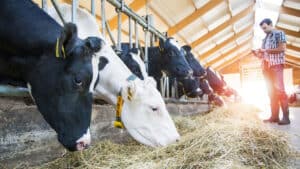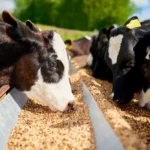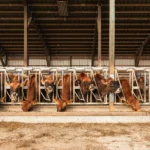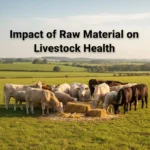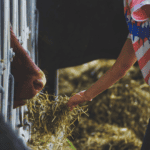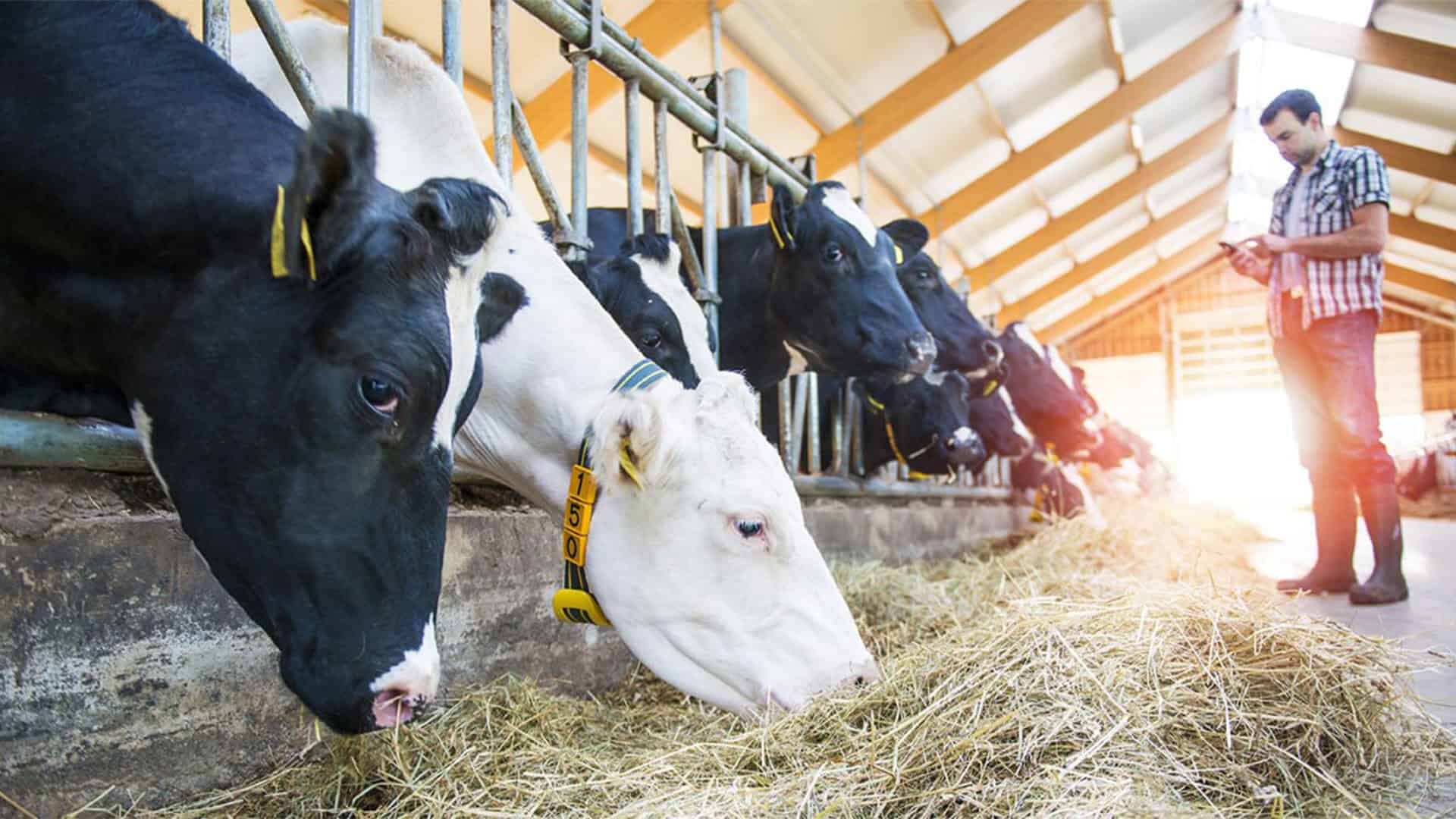
Top 10 Benefits of Balanced Nutrition in Cattle Feed
11 Sep 2024 - Admin
Top 10 Benefits of Balanced Nutrition in Cattle Feed– It’s a good reason for livestock farmers who are concerned about the overall health of their animals. The health of a large group of animals is threatened by many factors. Cattle are particularly vulnerable to problems caused by unbalanced or inadequate nutrition. In addition, many cattle animals depend on the feed to maintain their health and productivity. Sometimes cattle are unable to digest a variety of foods such as grass, hay, grain, and many more. In this blog, we will discuss the top 10 benefits of balanced nutrition in cattle feed.
Significant Nutrients in a Balanced Diet for Cattle Feed
A balanced diet for cows includes a variety of nutrients, including:
| 1. Carbohydrates | Cattle animals get maximum energy from carbohydrates which are present in grass, hay, and grain. |
| 2. Protein | Protein is very important for the growth of the cattle. In addition, beef, milk, and soy are excellent sources of protein for cows. |
| 3. Fat | Fat is energy for cattle and is important in cold weather. It is found in meat, milk, and some vegetable oils. |
| 4. Vitamins and minerals | Animals need vitamins and minerals for proper body function and growth. Vitamins and minerals are found in food items such as fruits, vegetables, and grains. |
Nutrients Important in Cattle Feed
There are many ways to provide a balanced diet to cattle animals. But the easiest way is to give a feed that provides all the necessary nutrients to animals. It is prepared with the help of mixing different foods such as hay, grain, and forage. Here, is the list of the top Nutrients for cattle feed:
Mazie
Maize is high in metabolism and low in fiber. Additionally, a new variety of maize was produced with a high methionine and lysine. The improper storage of the maize can have better moisture and be prone to producing aflatoxin.
Bajra
Bajra is very similar to sorghum which has the same nutritional value as bajra. It includes more than 2% of crude protein and tannin. The seeds of the bajra are very hard and they should be crushed before feeding to the cattle.
Rice
Rice is rich in crude protein and energy value as compared to maize. It is widely consumed by humans and it provides the maximum health benefits to cattle animals.
Barley
Barley is high in fiber and it has approximately 14% of crude protein. It has low lysine and oil content. Additionally, barley is the main concentrated food for the flattening animals and it is also rich in lysine.
Wheat
Wheat contains 12% of crude protein and glutelin, protein mixture, and gluten. It has a strong value of gluten and is preferred for bread making and it traps the grasses, produced by yeast fermentation. Additionally, wheat is unpalatable to animals and it has a pasty mass which leads to digestive system upset.
Top 10 Benefits of Balanced Nutrition in Cattle Feed
1. Promotes health and well-being
Animals need nutrients just like humans. It contains basic substances such as protein, carbohydrates, fats, minerals, and vitamins. These are the building blocks for plant and animal care. Protein helps the animal grow and supports the growth of muscles and other parts of the body. Energy comes from carbohydrates and fats, which help to maintain the activity and activity of the animal. Minerals and vitamins support important aspects of growth.
2. Better yield and performance
Farmers can ensure better yield by providing balanced nutrients in the feed. Healthy animals do better. An unbalanced diet (having too much of one nutrient and not enough of others) can cause problems such as:
- Low production and fertility
- Poor reproduction and plant
- Decreased immune response in animals
- Increases risk of infection.
3. Saves money and resources
Feeding helps farmers reduce disease and improve animal health. Feeding animals helps them produce more milk, meat, and eggs. This saves farmers money on feed costs and reduces their impact on the environment. In addition, it is important to feed the animals to produce higher-quality products, which have high market value.
4. Supporting sustainability
Accurate nutrition is very important to maintain in cattle feed for sustainable agriculture. With the help of providing animals with the necessary nutrients, farmers can improve their overall health, reduce the risk of disease, and improve growth and productivity. This increases the efficiency of animal production and reduces the use of resources such as water and land.
5. Fertility Improvement
Many similar studies published by animal health experts have found a direct link between diet and animal reproduction. Feeding patterns, quality and quantity of forage, and most importantly, the nutritional value of the forage have a significant impact on the reproductive health of the animal.
6. Increase productivity
In general, proper nutrition promotes animal health and increases productivity. Healthy cows and chickens with proper nutrition produce more milk, meat, and eggs. While gross production figures are the backbone of any agricultural enterprise, results are only half the story
.In the past few decades, consumer preferences for the quality of food products have changed dramatically. There is a growing demand for agricultural products grown using sustainable methods.
7. Prevent Malnutrition, Weakness, and Disease
There are hundreds of food-related diseases affecting animals. Most of these diseases are due to malnutrition, and lack of minerals and vitamins. Malnutrition and undernutrition can seriously affect the growth, development, and production of animals. Some serious diseases can lead to irreversible health conditions, disability, or death.
8. Improves the immune system of Cattle
Protein, calcium, vitamins, and minerals are important to support the growth and performance of cattle. The feed can improve the digestion and absorption of the food in the cattle. However, different digestive processes are involves in animal digestion.
9. Increase milk production
A balanced source of nutrients is essentail for the maintenance, growth, and production of milk. Choosing a brand of the best pet food, such as Guca feed, will help provide nutrients, vitamins, and minerals. Providing nutritious, high-quality forage improves milk production and improves cow performance.
10. High productivity and reproduction
High-quality feed improve the animals productivity which get affects by good nutrition. Proper nutrition in the diet will increase the productivity of the animals and prolong their life. Farmers need to focus on the nutritional value of the feed to improve the growth and productivity of the cattle.
The dairy cow’s diet
Main components of a dairy cow’s diet for producing milk and their health
- Water,
- Proteins,
- Carbohydrates,
- Minerals,
- Lipids, and
- Vitamins
Successful dairy cattle feeding requires an understanding of their physical traits as well as how they interact with one another.
Essential feed – Water
Water intake is the main source of cows, because they are extremely sensitive to electricity, cattle will frequently cut back on their water intake. Cattle that test the water with their tongues before drinking and those that lap water while drinking are two examples of stray voltage observations.
- Cow intake Water according to their body weight.
- For production of milk water is very essential
- For maintaining temperature, insulation, waste elimination, and movement of material in the body, water is essential.
Let’s Discuss What Should Dairy Cow Eat
Legumes and grasses: Keeping legumes and grasses for a month enhances the nutrition of the grass for cows. There is a shortage of grasses and legumes due to the growing number of dairy farms, and in severe winter conditions, neither crops nor grasses are present. In order to improve the quality of forages and use them when needed, many farmers began preserving their grasses.
Products: Byproducts, or crops that are also farmed for human consumption, make up the majority of the diet of dairy cattle. Items such as:
- Grains
- Almond hulls
- Soybean meal
- Citrus pulp
High-quality nutrient products provide high-quality food in the form of milk, so you have to make sure to provide high quality diet to cattle.
Grains: Grain, which makes up about 20% of the feed, is the major component when discussing diet.
Vitamins and Minerals: You should feed the cow with a qualified nutritionist who will establish the specific needs to satisfy the cow’s diet. Similar to how humans require the right amount of vitamins and minerals in their everyday lives, cattle likewise require a little amount of these nutrients.
Analyse Your Feed
- The feed should be analysed for the contribution of nutrients.
- It doesn’t adjust for dietary excesses or deficits and doesn’t balance the ratio.
- You need to know the amount of each feed you give, together with its nutritional value, in order to perform an accurate analysis.
Balance Feed
- Feeds are combined using a ration balancer program to satisfy the nutrient requirements specified for a ration.
- The amount of feed you use to suit your herd’s demands depends on its nutrient composition.
- Profit and feed costs are not taken into account by a balancing program.
The Dairy Cow’s Diet is One That Everyone Should Adhere To
- Planning nutrition
- Planning Feeding
- Feed Options
- Manage forage feeds
- Manage non-forage feeds
- Manage dry cow feed
For Effective Milk Production, What Action Plans Should You Take?
- An important key factor that you should know is the requirements of your cow.
- With a balanced diet and maintaining data on cows about their needs
- Maintain all stock to have sufficient for feeding the cow
- Always ensure that all stocks have good-quality water
- Water intake is very necessary, and with feed, you should always check the performance and note it down so you can check the productivity.
Conclusion
To keep the health and productivity of the cattle, it is important to feed them a good feed. Prodigy Foods has a complete feed that is specially formulated to provide all the necessary nutrients for cattle. Our diets contain important nutrients that are carefully blended into the diet to create a balanced diet that meets the nutritional needs of your cattle.
Frequently Asked Questions (FAQs) for Top 10 Benefits of Balanced Nutrition in Cattle Feed
1. Why is a balanced diet important for cattle?
Cattle need balanced feed that contains protein, minerals, and vitamins for proper growth and milk production in cattle.
2. What are the benefits of balanced feed in animals?
Cattle feed contains protein energy, minerals, and vitamins which are important for cattle animals.
3. What are the ingredients important for the cattle feed?
A feed is a mixture of protein supplements which include oil cakes, cereals, grains, gram husks, wheat bran, and rice.
4. Essential feed required for dairy cows.
Diet is something that dairy cows are dependent on this including proteins, carbohydrates, vitamins, water, and minerals, for the good health of the cow.
5. Grasses and legumes play an important role in a cow’s diet
These should be preserved properly because they provide nutrition and serve as vital forage, in winters when grass is no more in the field, this helps for the cows’ diet.
6. The amount of nutrition, like vitamins and minerals, in the cow
Humans also intake vitamins and minerals to maintain proper health, while cows feed on grass in which provides minerals and providing specific amount of vitamins and minerals for cows for their health as well as good milk.

 Get a quote
Get a quote